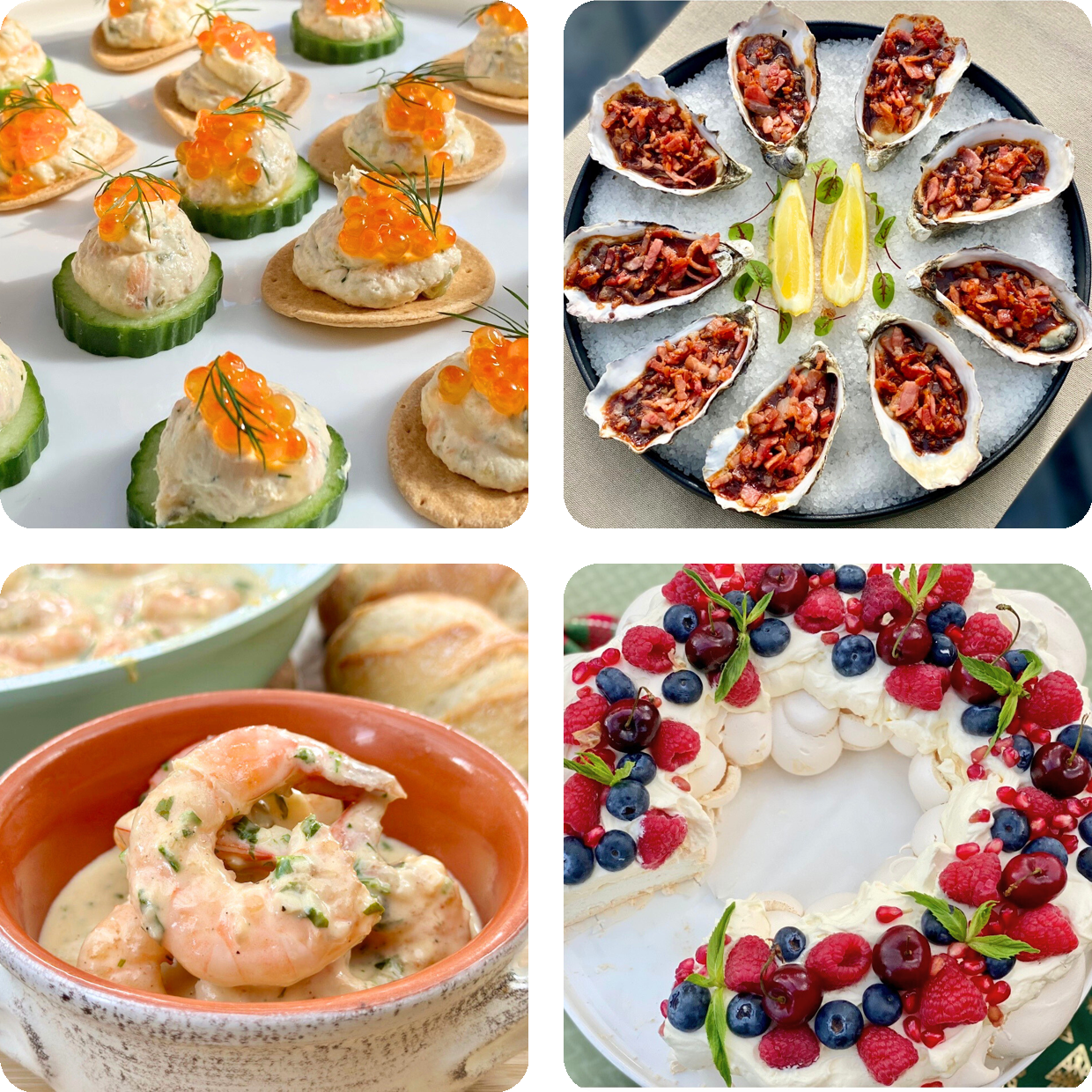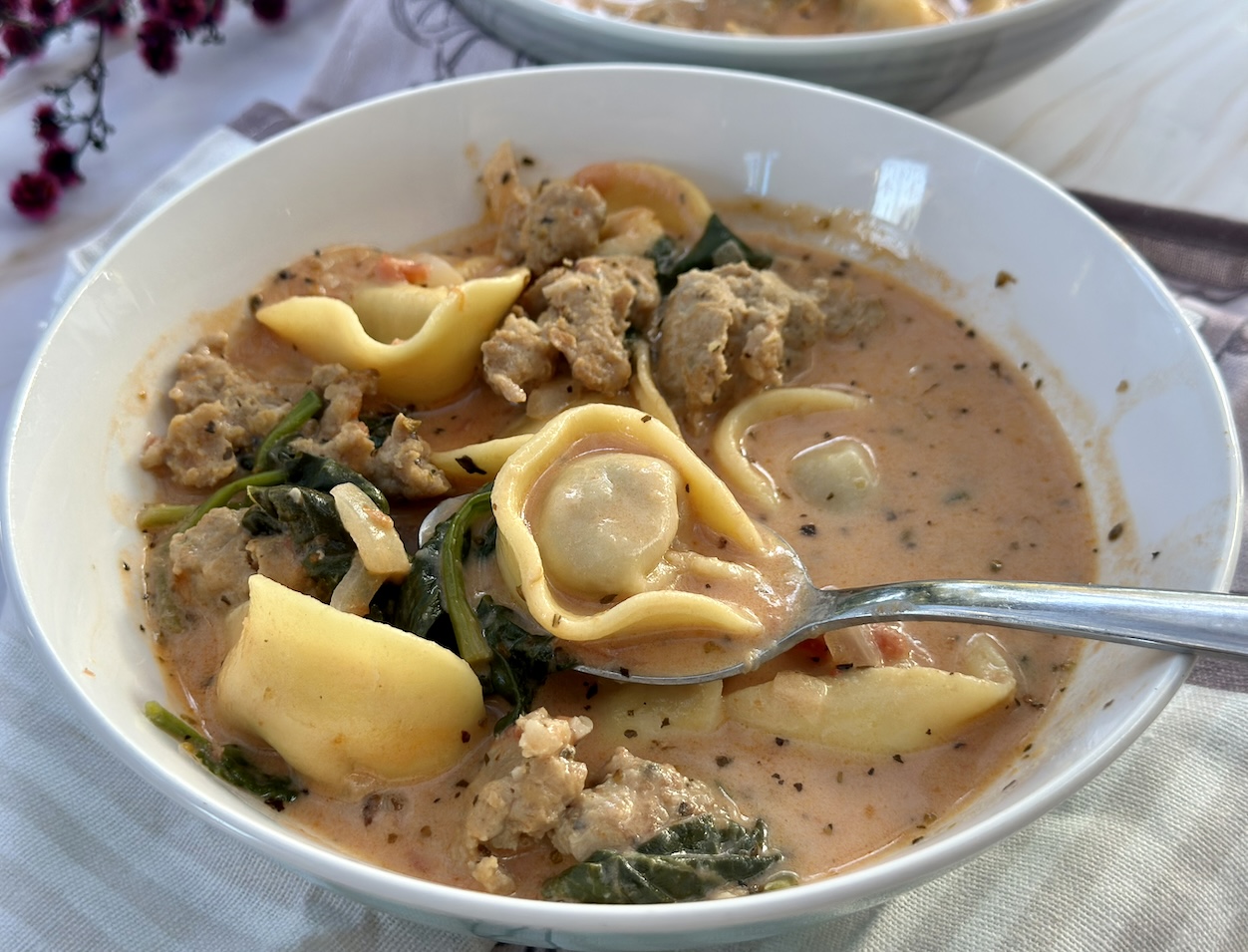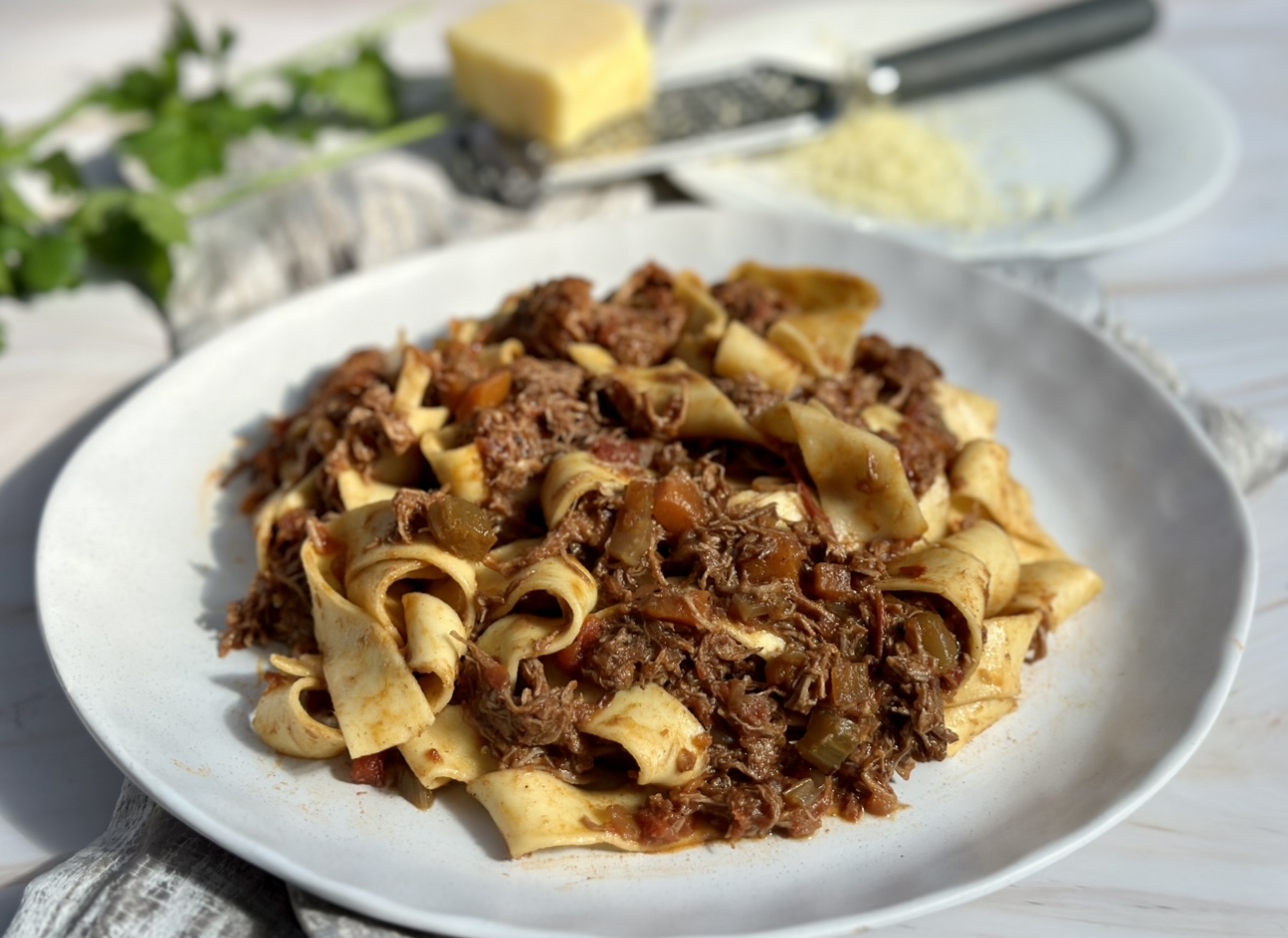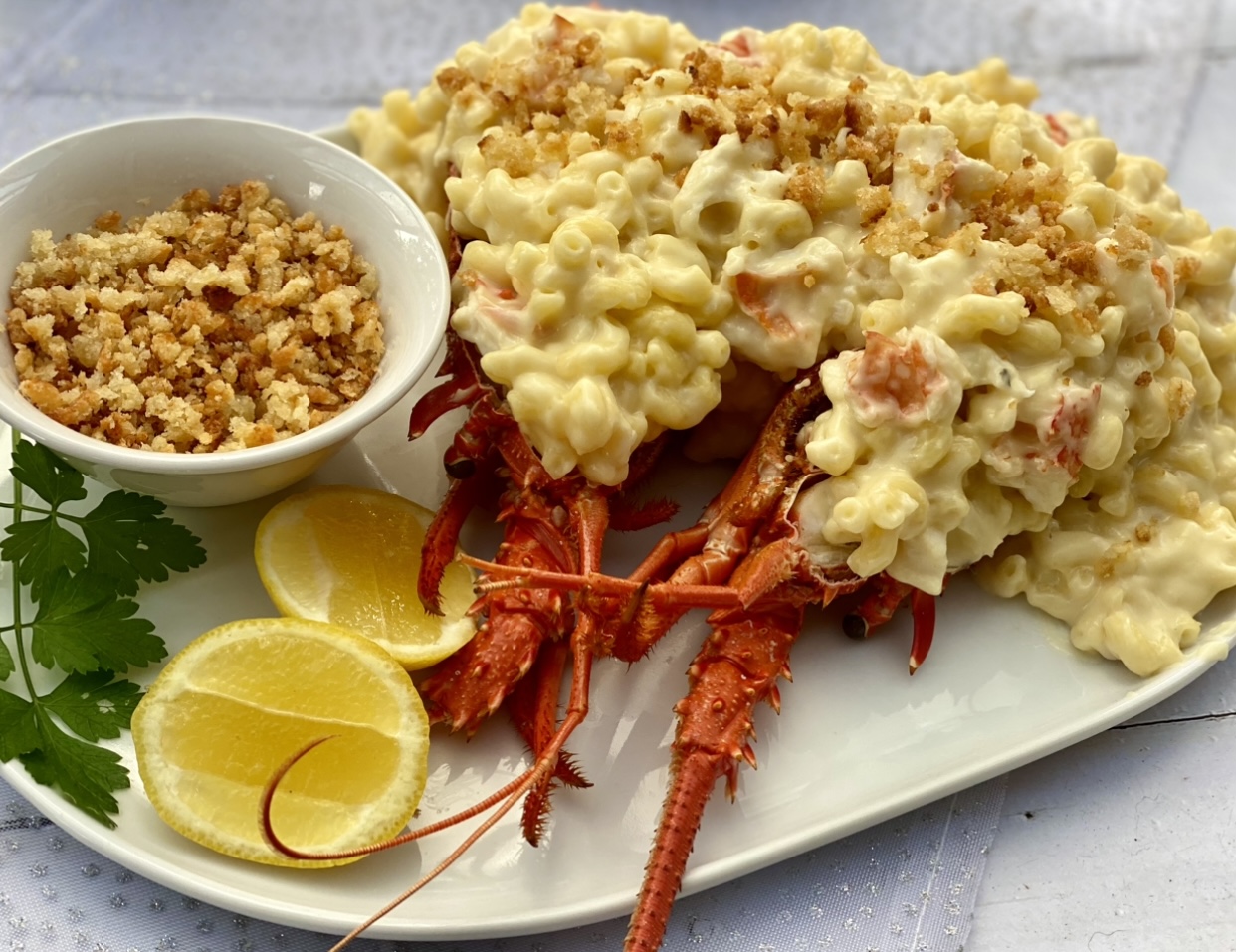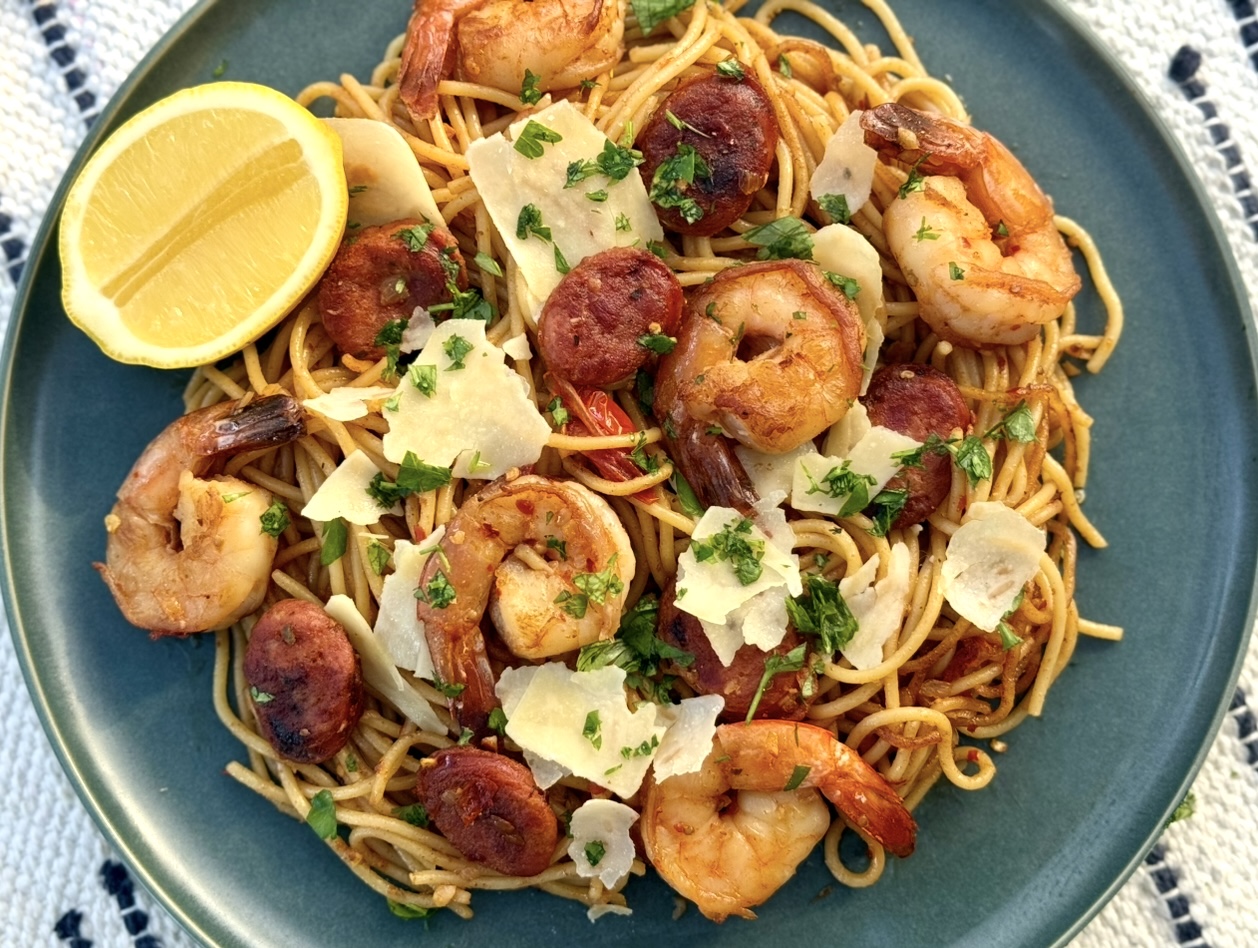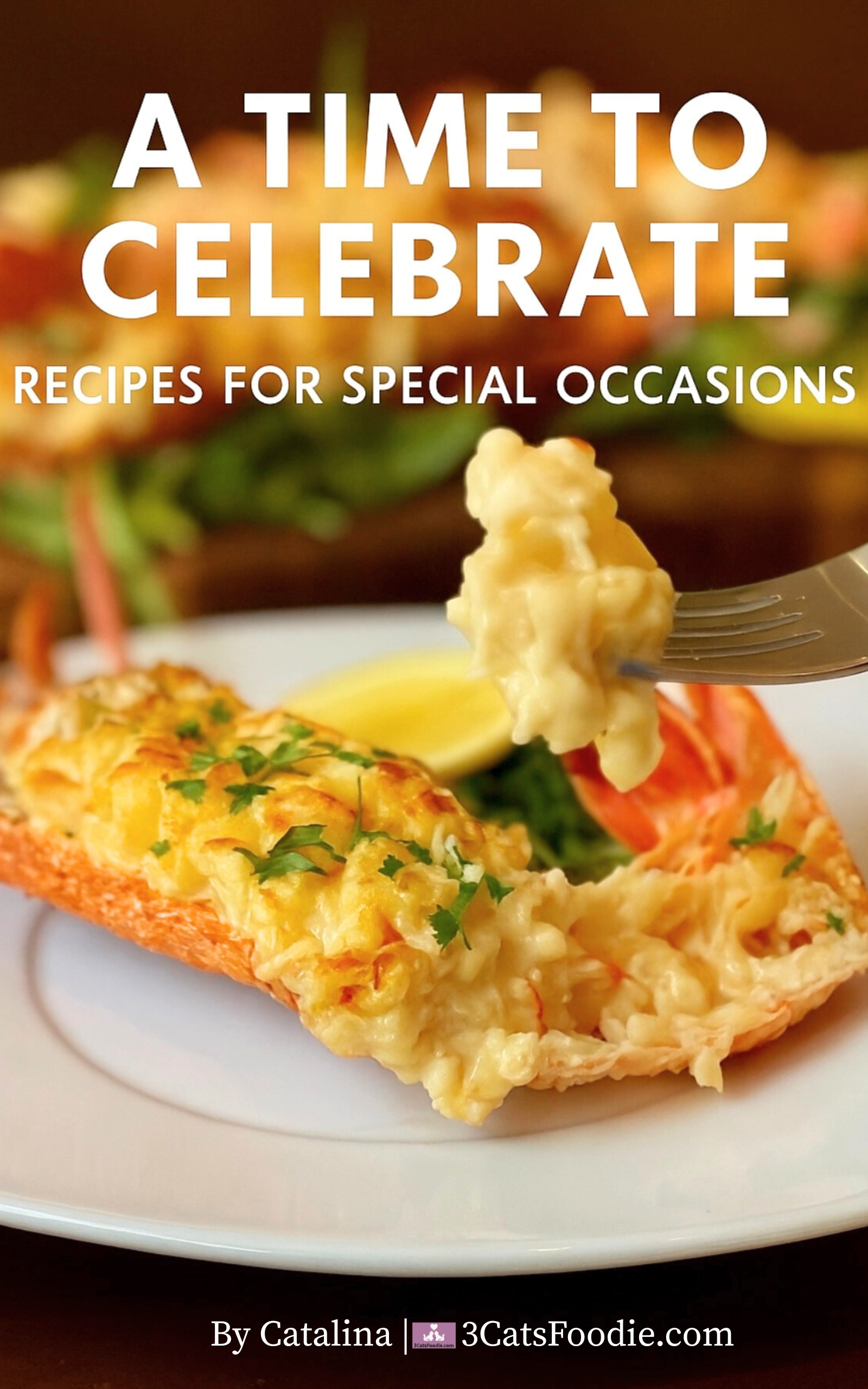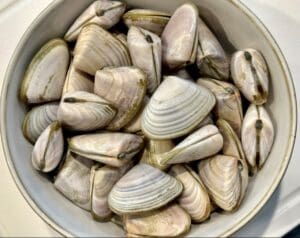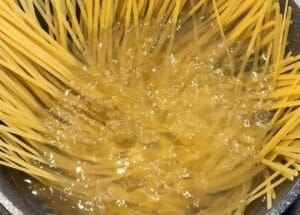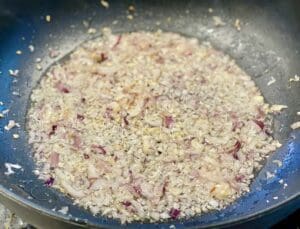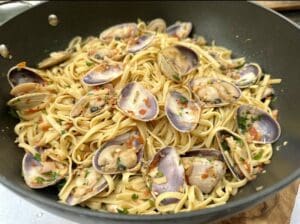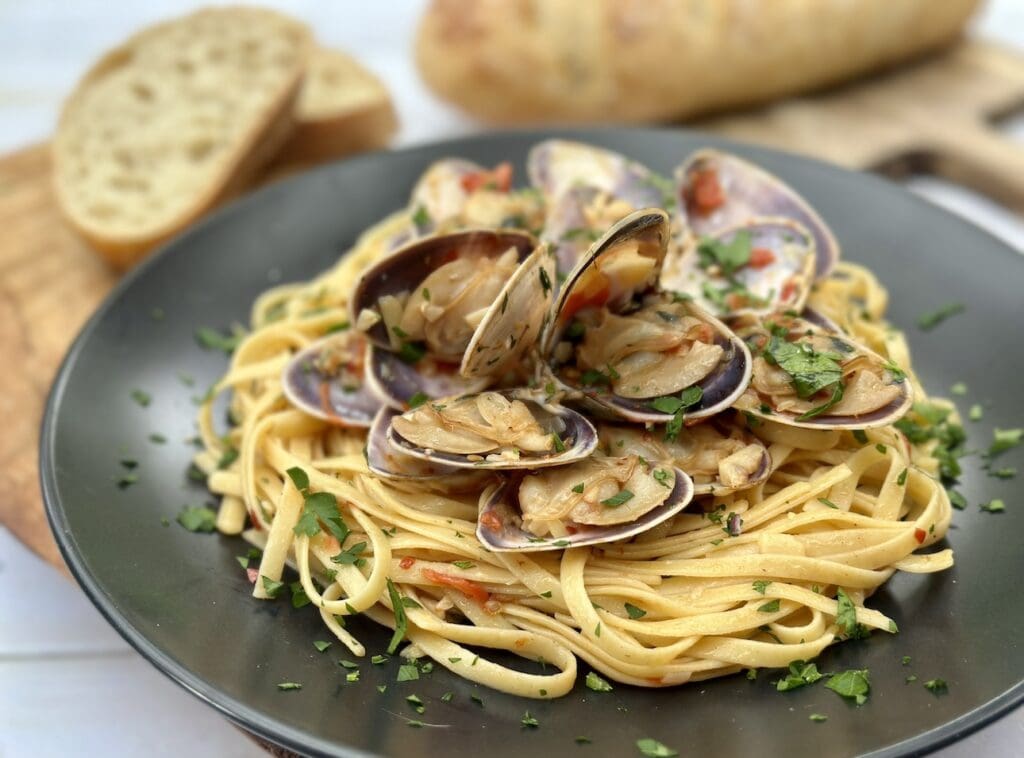
Clam Pasta may sound complicated and intimidating, but it really isn’t! Get this impressive pasta on your table in under 30 minutes!
Love clams but don’t want to deal with them!
There’s just something so appealing about seeing clams in their shells poking out from a pile of pasta! It stimulates my hunger immediately and I just want to grab a fork and dig right in! You better turn away because it’s not a pretty sight.
What do you do when you love Clam Pasta but don’t want to deal with messy clams? Do you leave it to the experts and order this dish when dining out? Good idea because I still do ?
However, making Clam Pasta is quite satisfying to replicate at home if you’re able to get some beautiful live clams. Once you have cleaned clams, you’ll be able to indulge in this elegant dish in under 30 minutes. Yes, it’s that quick and easy!
WHAT? YOU WANT US TO CLEAN CLAMS?! You’re probably visualising being at the kitchen sink tirelessly scrubbing every clam until they’re sparkling clean. Don’t worry because this won’t be happening. As a lazy cook deep down inside, I have you covered! I have written a bunch of helpful tips below for you, so be prepared to be a clam expert by the end of this.
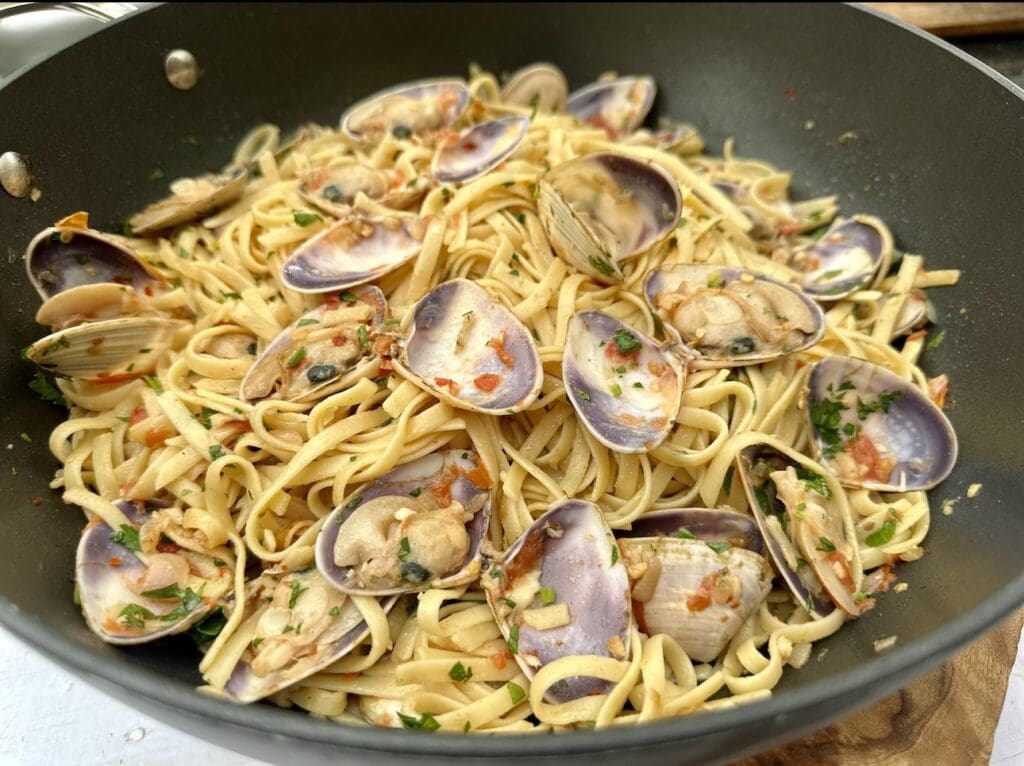
Apart from the clams, the rest of the ingredients are straightforward. We have linguine (although you could swap it for spaghetti) plenty of garlic, shallots, dry white wine, tomatoes, chilli flakes, lemon and parsley. Simple and delicious flavours that’ll make the clams shine as the key ingredient.
For an sophisticated dish you’re likely to pay a small fortune for at the restaurant, you can make it at home for family or friends at a fraction of the cost. All you need to do now is chill a bottle of wine, get some crusty bread ready, and dream about Tuscany.
Clam Pasta and some tips
What type of clams are best with pasta?
I used pipis, a type of flat clams that are native to Australia. You could also use Littleneck clams or any medium-sized clams that are native to your area. Just make sure your clams are fresh and alive when you purchase them. Buy clams with smooth flat shells, as these make cleaning much easier, as there’s no need to scrub dirt stuck in the grooves.
Why are my clams gritty?
Clams live and bury themselves in sand or mud, so when they open their shells, particles of sand and dirt get inside. Purging the clams in salt water for an hour will make the clams expel any sand and dirt inside their shells. Skipping this step will make the clams gritty and pretty much inedible.
My clams were alive and taken from a clean, filtered tank. This meant they were already sand and dirt-free, which saved lots of time because I could use them immediately. Some fishmongers also sell convenient live cleaned ‘pot-ready’ clams in sealed packets. To be sure, ask your fishmonger if you need to clean their clams prior to cooking.
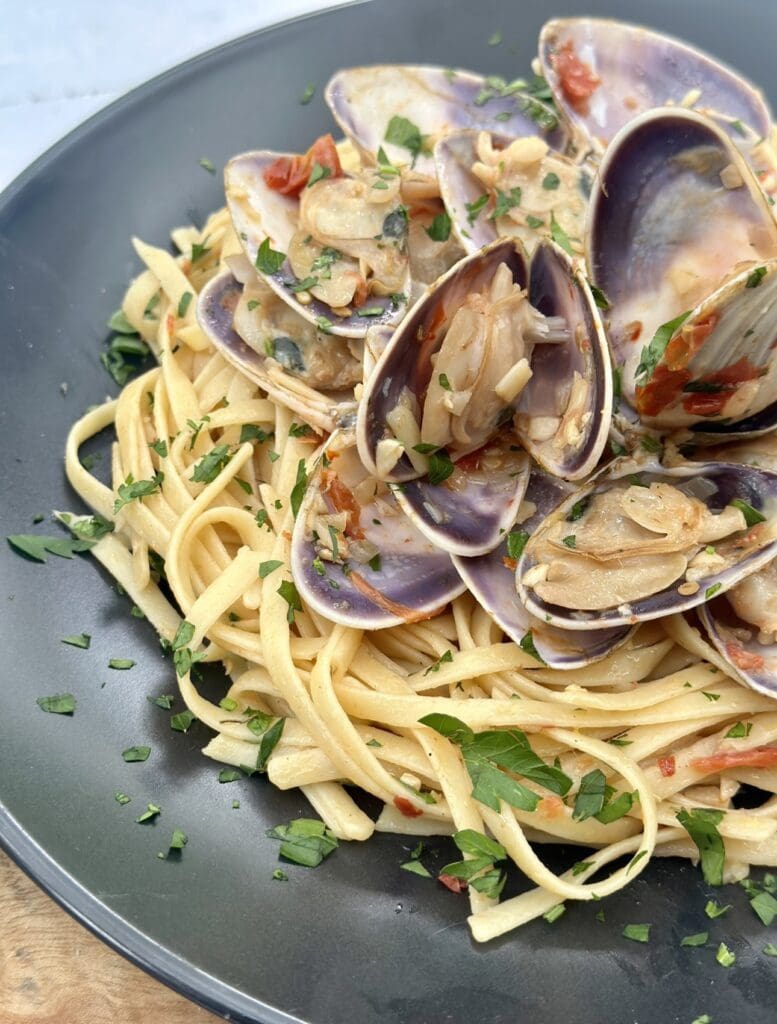
How to clean clams
Fill a large bowl with 4 cups of cold or room temperature water, then dissolve 2 tablespoons of salt in the water. Submerge the clams in the salt water for an hour. During this time, the clams will spit sand from their shells. Remove the clams from the salt water and rinse with cold water. If there’s dirt stuck in the shells, scrub them clean using a kitchen brush and water.
Why are my clams rubbery?
Clams cook really quickly, so if we leave them over the heat for too long, they will become rubbery. To avoid having tough clams, I cook them over high heat so they pop open quickly. As soon as they open, I reduce the heat or remove them from the pan. Discard any unopened clams, as these are likely to be bad and not safe to eat.
More mouthwatering pasta recipes to try at home:
Ingredients for Clam Pasta
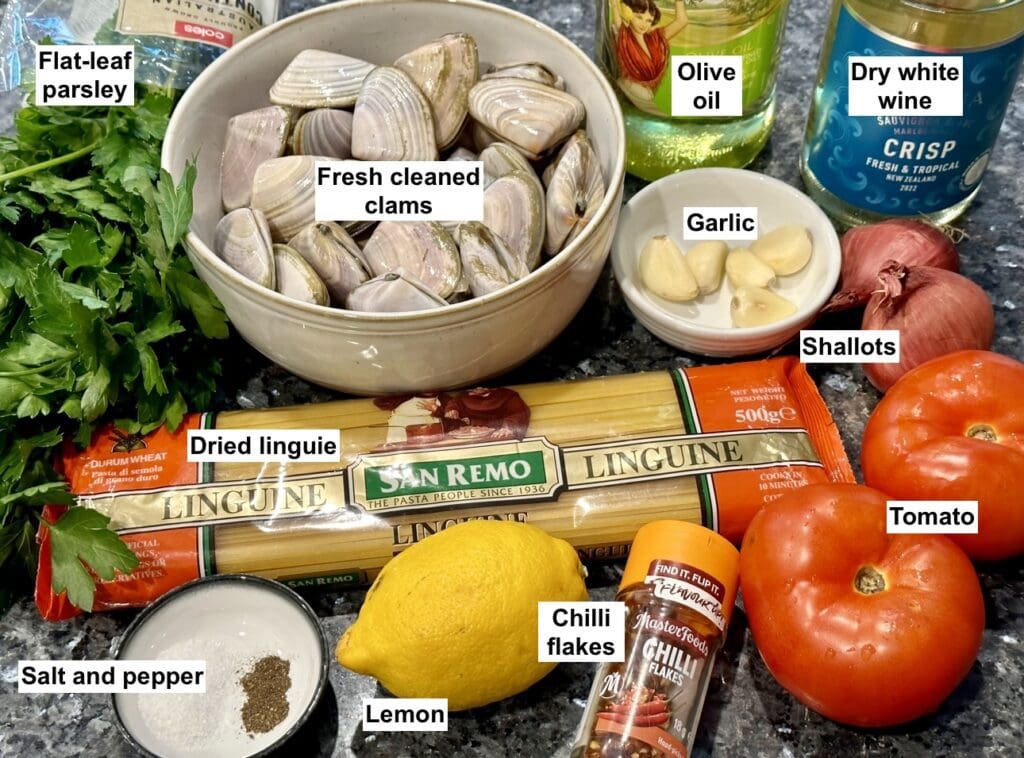
Clams – I used pipis which are native to Australia, but any variety of firm and meaty medium-sized clams, such as Littleneck, would work. For details on how to clean and purge sand and dirt from clams, please scroll this page up.
Linguine – If you don’t have dried linguine at home, you could swap it with equal amounts of dried spaghetti, fettuccine or tagliatelle.
Shallots (eschalot or French shallots) – Shallots look like small brown onions but are skinny and oval-shaped. They’re difficult to peel and are more expensive than other types of onions. Shallots have a mild flavour, but you could swap them for equal amounts of brown or red onions.
Olive oil – I prefer to use mild, light or regular olive oil as I find extra virgin olive oil is too dominating in flavour. If preferred, you could swap for an equal amount of extra virgin olive oil in this recipe.
White wine – Any white wine will work, but if possible, use ‘dry’ white wine such as Sauvignon Blanc, Chardonnay or Pinot Grigio because they’re less sweet. If you wish to omit the wine, swap it for equal amounts of chicken stock or broth.
Subscribe to 3CatsFoodie’s FREE Newsletter

For the latest recipes and other fun stuff!
How to make Clam Pasta
Step-by-step guide with photos
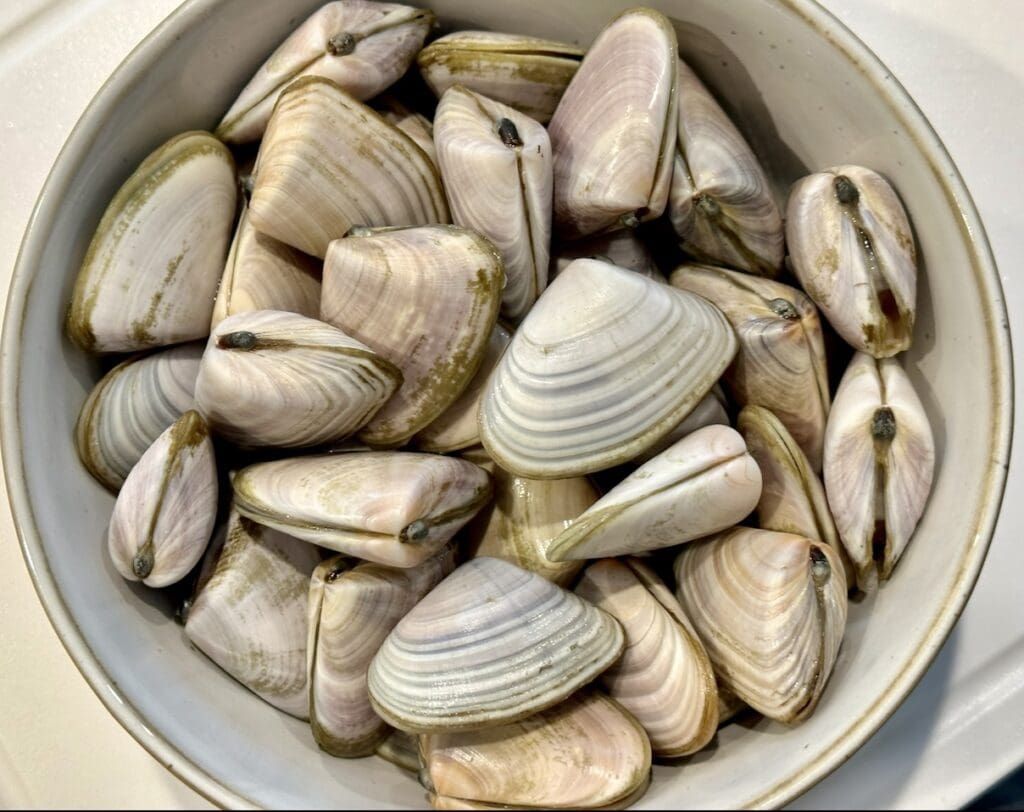
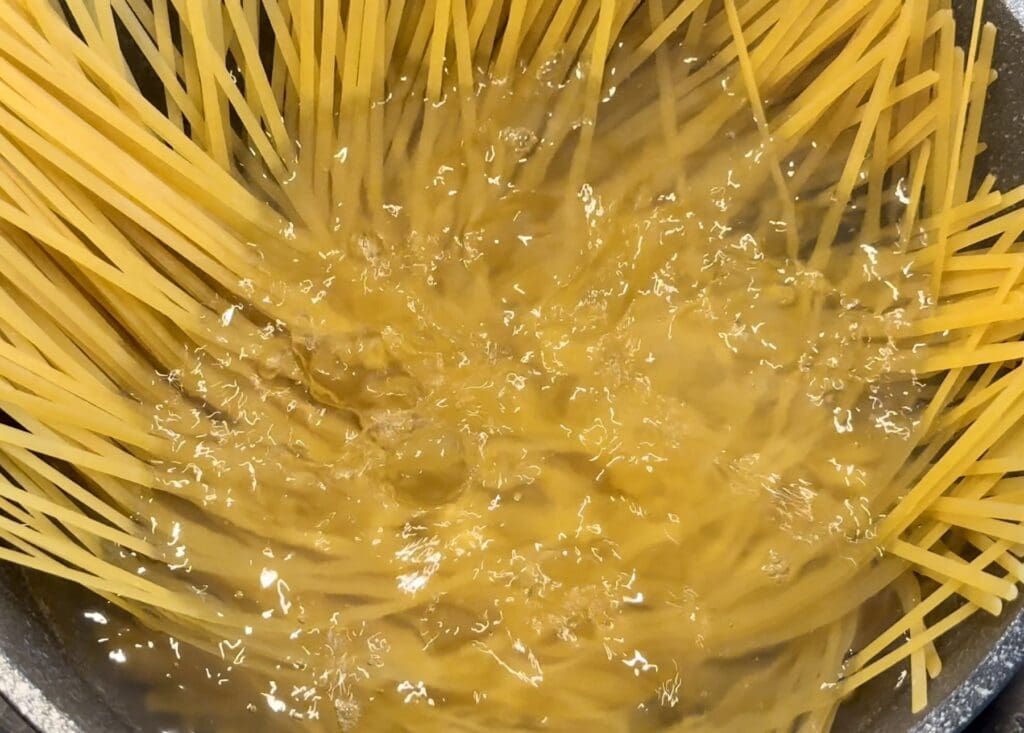
If your clams are not dirt and sand-free, you’ll need to clean and purge the clams before cooking them. For directions on how to clean your clams, please scroll this page up.
Cook the linguine as per the instructions on the packet, but undercook it just slightly. The pasta should be a little firm when bitten (al dente). Before draining the pasta, save half a cup of its water (pasta water). Drain pasta using a colander, then rinse with cold water. Toss the pasta with a tablespoon of olive oil to stop it from sticking together. Alternatively, you could cook the pasta along with the dish, then transfer it straight into the pan when it’s time to add the pasta.
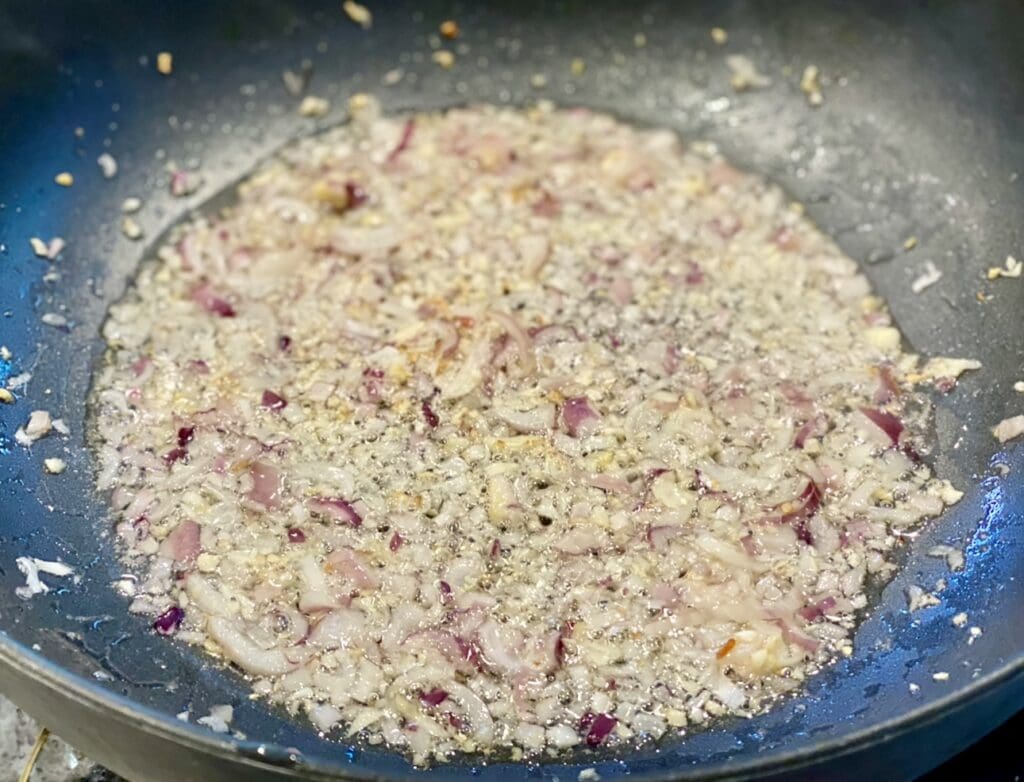
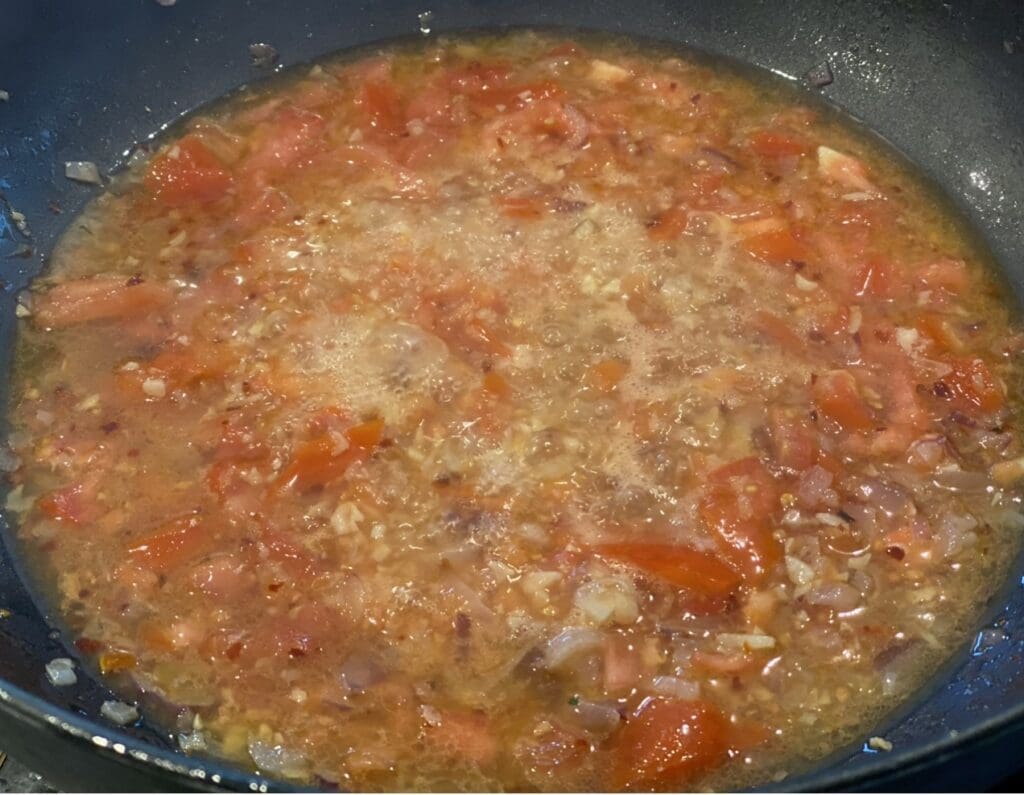
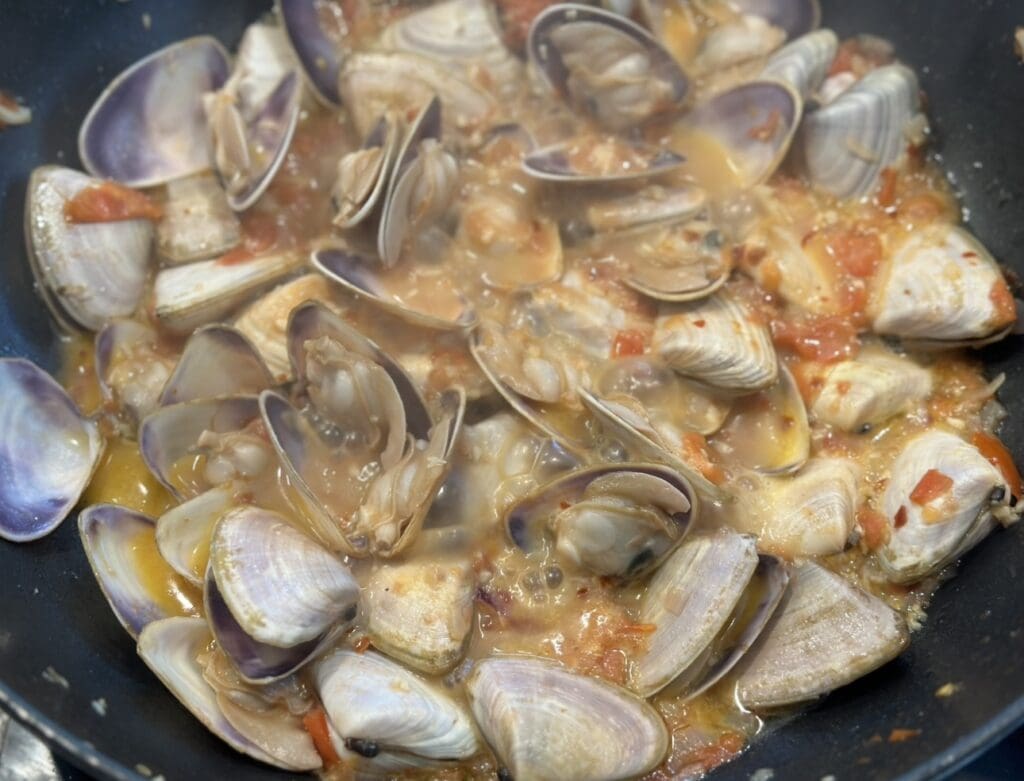
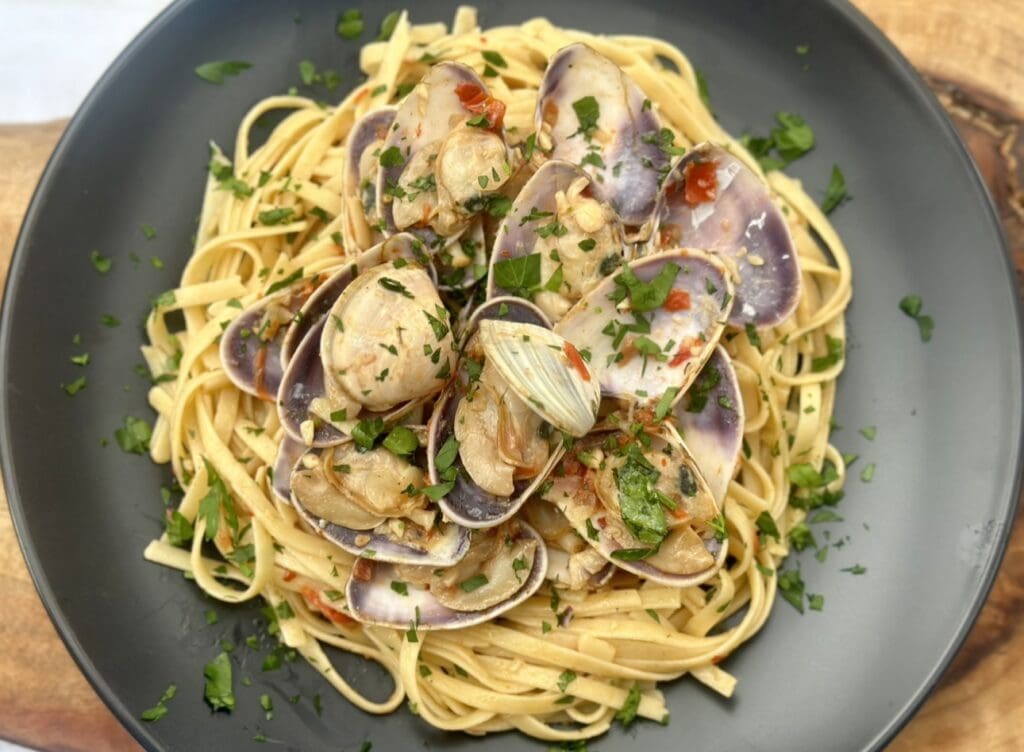
Heat oil in a deep frying pan over medium heat, then add in garlic and shallots, saute for a minute or until fragrant, but don’t let it burn or it’ll be bitter. Increase the heat to medium-high, then add the wine, tomatoes and chilli flakes. Stir regularly for 3 minutes.
Place the clams into the sauce and cover for 4 to 6 minutes, or just until the clams open up. Don’t overcook them or they’ll turn rubbery. Add in the pasta, salt and pepper, then stir just until it’s heated through. Have a taste and add more salt or pepper to your liking if needed. Remove the pan from the heat, then stir in the lemon juice and parsley into the pasta. Best served immediately.
Leftovers
Clam pasta is best served immediately, as reheating is likely to cause the clams to get rubbery. However, if you have leftovers, transfer the clam pasta to an airtight container and store it in the fridge. For safety reasons, consume within 24 hours after making the dish.
I’ve used a third-party application to calculate the calories and nutritional information, so please use this as an approximate guide only.
Cooking measurements are in Australian standard spoon and cup measurements. For specific details and conversions, visit our Australian Cooking Measurements page.
I would love your feedback and support if you made this recipe. To do this, please rate this recipe and provide a comment by scrolling down this page or by clicking that green circle on the bottom left. An email address is required (for spam), but it won’t be published. I would also love to see your dish, so don’t forget to tag me on my Instagram account ‘3catsfoodie’
Cheers – Cat T
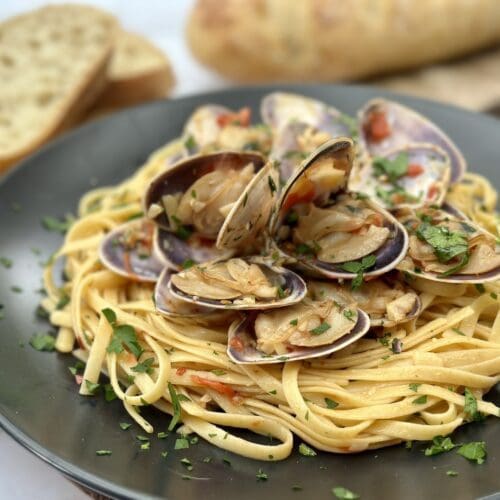
Clam Pasta (easy and so delicious)
Video
Ingredients
- 1kg / 2.2lb clams (scrubbed and cleaned) (NOTE 1)
- 400gm / 14oz dried linguine (NOTE 2)
- ⅓ cup olive oil (light or mild) (NOTE 3)
- 5 garlic cloves (minced)
- 2 (80gm / 30oz) shallots (finely chopped) (NOTE 4)
- ¾ cup (180ml / 6floz) dry white wine (NOTE 5)
- 1 cup (230gm / 8oz) diced tomatoes
- ½ to 1 tsp chilli flakes (more or less to your liking)
- ¼ cup finely chopped flat-leaf parsley (more for garnish)
- 2 tbsp fresh lemon juice
- ½ tsp salt
- ⅛ tsp freshly ground black pepper
Instructions
- If your clams are not dirt and sand-free, you'll need to clean and purge the clams before cooking them. For directions on how to clean your clams, please scroll this page up.

- Cook the linguine as per the instructions on the packet, but undercook it just slightly. The pasta should be a little firm when bitten (al dente). Before draining the pasta, save half a cup of its water (pasta water). Drain pasta using a colander, then rinse with cold water. Toss the pasta with a tablespoon of olive oil to stop it from sticking together. Alternatively, you could cook the pasta along with the dish, then transfer it straight into the pan when it's time to add the pasta.

- Heat oil in a deep frying pan over medium heat, then add in garlic and shallots, saute for a minute or until fragrant, but don't let it burn or it'll be bitter. Increase the heat to medium-high, then add the wine, tomatoes and chilli flakes. Stir regularly for 3 minutes.

- Place the clams into the sauce and cover for 4 to 6 minutes, or just until the clams open up. Don't overcook them or they'll turn rubbery. Add in the pasta, salt and pepper, then stir just until it's heated through. Have a taste and add more salt or pepper to your liking if needed. Remove the pan from the heat, then stir in the lemon juice and parsley into the pasta. Best served immediately.


